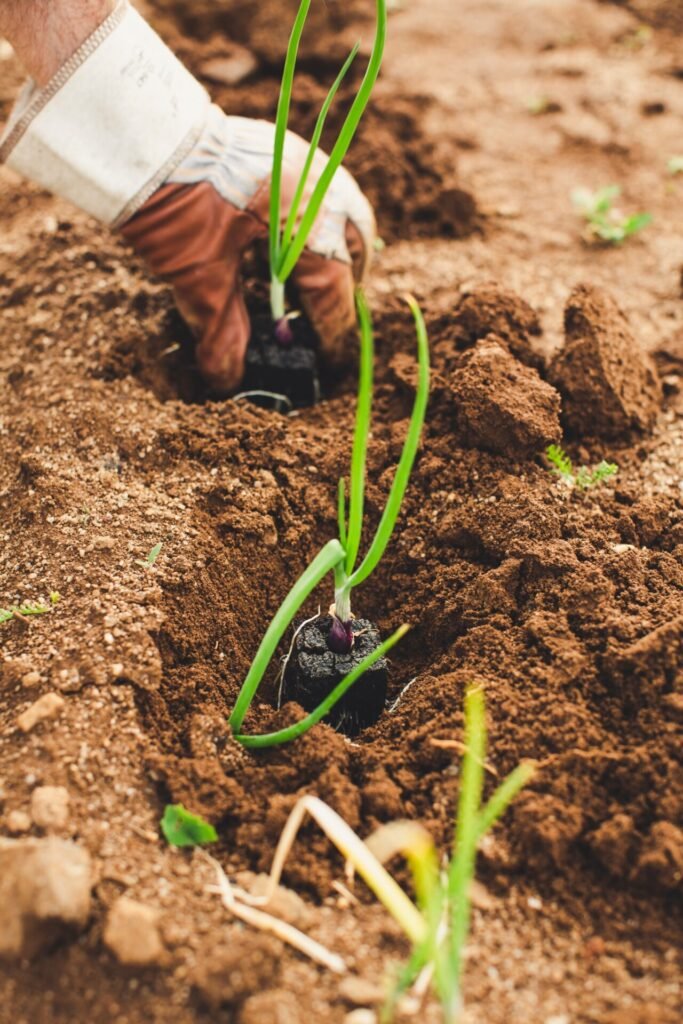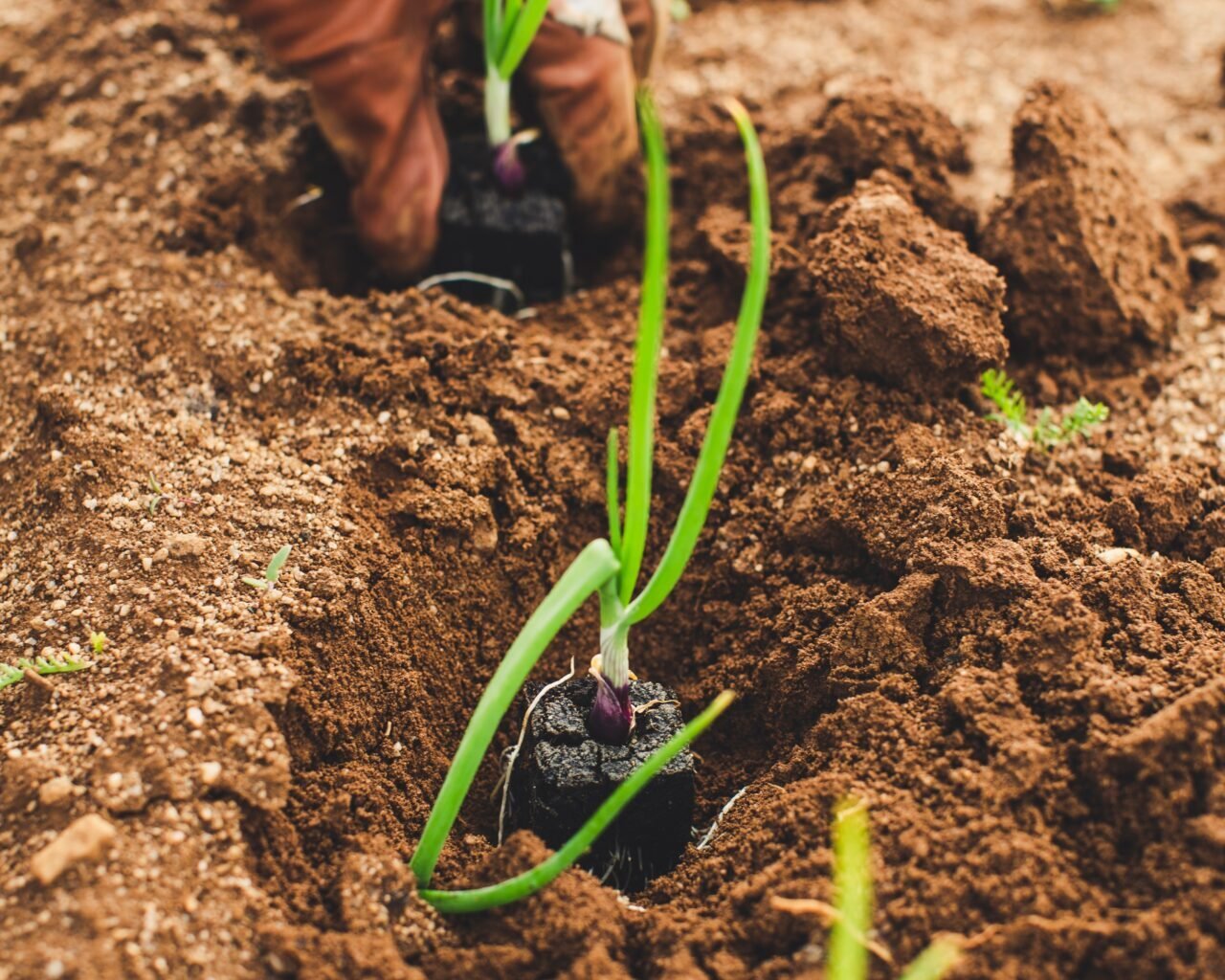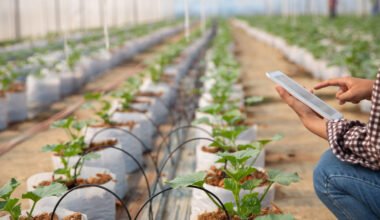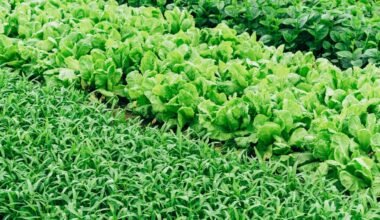As a farmer or someone interested in the future of food production, regenerative agriculture may be an unfamiliar concept to you. However, it is a farming philosophy that can transform the way we cultivate the land and produce our food.
Regenerative agriculture seeks to rehabilitate degraded soil and ecosystems through sustainable farming practices. The core principles revolve around disturbing the soil as little as possible, keeping the ground covered, increasing biodiversity, and integrating livestock. The results are improved water retention, carbon sequestration, and crop yields.
For you, the farmer, regenerative techniques can enhance the long term productivity and profitability of your land. For our planet, the widespread adoption of regenerative agriculture may be one of the most promising paths towards mitigating and adapting to climate change. If you care about the future of food and the environment, it is worth learning more about this groundbreaking approach to farming.

What Is Regenerative Agriculture?
Regenerative agriculture refers to farming practices that focus on rebuilding and restoring the soil’s natural fertility and biodiversity. The core principles involve using natural processes and organic techniques to improve soil health, strengthen ecosystems, and increase crop resilience.
Some of the main practices of regenerative agriculture include:
- Reducing or eliminating tillage. Conventional plowing and tilling disrupt soil structure and damage soil organisms. Minimizing tillage helps maintain soil biodiversity and preserves soil carbon.
- Diversifying crop rotations. Rotating a diverse range of crops, rather than planting the same crop repeatedly, helps naturally break disease and pest cycles, builds soil structure, and provides a range of root depths to access nutrients.
- Using cover crops and green manures. Cover crops and green manures are planted to cover and protect the soil when fields are not in production. They prevent erosion, fix nitrogen, and increase organic matter.
- Integrating livestock. Managed grazing of livestock, especially ruminants like cattle or sheep, can help cycle nutrients, spread organic matter, and stimulate plant growth. Their hooves also help aerate the soil.
- Reducing synthetic inputs. Minimizing or eliminating the use of synthetic fertilizers, pesticides, and herbicides avoids disrupting the soil food web and natural processes. Organic techniques are used instead.
Regenerative agriculture aims to work with natural systems and the innate tendencies in nature. By restoring soil health and function, regenerative farming practices can produce nutritious food, support agricultural resilience, and mitigate and adapt to climate change. Overall, regenerative agriculture leads to a sustainable and prosperous future for farming.
Core Principales of Regenerative Agriculture
Regenerative agriculture is founded on several core principles that guide farming practices focused on soil health and environmental sustainability.
Diversity
- Promoting crop diversity and rotation, as well as integrating livestock. Growing the same crops on the same land year after year depletes the soil of nutrients and increases the risk of disease. Rotating a diverse range of crops and incorporating livestock helps build soil organic matter and breaks disease cycles.
Soil health
- Prioritizing practices that enhance soil health and function. This includes minimizing soil disturbance, using cover crops, composting, and reducing chemical inputs. Healthy, living soil with high organic matter is the foundation for plant health and productivity. Chemical fertilizers and pesticides damage soil microbiology and reduce soil carbon levels.
Water management
- Using methods like conservation tillage, cover cropping, and crop rotation to improve how the soil absorbs, retains, and filters water. These techniques increase water infiltration into the soil, reduce runoff, and help recharge groundwater supplies. During droughts, healthy soil with higher organic matter also holds more moisture available for plants.
Livestock integration
- Incorporating livestock, especially grazing animals, into crop production systems. Managed grazing helps cycle nutrients, increases soil organic matter, and stimulates plant growth. The manure and urine from livestock also provide nutrients for crop growth. Integrating livestock and crops in a mutually beneficial system helps mimic natural ecological processes.
Reduced chemical inputs
- Eliminating the use of synthetic fertilizers and pesticides which damage soil health and the environment. The regenerative system relies instead on organic matter, crop diversity, and natural pest control methods to maintain crop health and productivity. Reducing chemical inputs is better for the planet, farm workers, and consumers.
Key Practices Used in Regenerative Farming
Regenerative agriculture employs several key practices to improve soil health, increase biodiversity, and mitigate climate change.
Crop Rotation
- Crop rotation involves planting different crops sequentially in the same field to maintain soil fertility and structure. Farmers rotate between plants with different nutrient needs and root structures. This helps prevent depletion of soil nutrients, limits pest and disease outbreaks, and reduces reliance on chemical inputs.
Cover Cropping
- Cover cropping uses crops like clover, rye, and buckwheat to protect the soil when fields are not in use. These crops prevent erosion, fix nitrogen, and increase organic matter as they decompose. Their roots also aerate the soil and make nutrients more accessible to subsequent crops.
Reduced Tillage
- Conventional plowing disturbs the soil and destroys soil structure. Reduced tillage or no-till methods minimize soil disruption, allowing soil microbes and earthworms to build soil structure. Undisturbed soil has higher organic matter, better water infiltration, and fewer weeds. No-till also reduces carbon dioxide emissions from soil.
Crop Diversity
- Monocrops dominate conventional farming, but regenerative agriculture incorporates crop diversity and crop rotation. Diverse cropping systems are more resilient to pests, diseases, and weather extremes. They also provide habitat for pollinators and natural enemies of crop pests.
Integrating Livestock
- Well-managed grazing livestock are an important part of regenerative systems. They fertilize the soil with manure, control weeds through grazing, and their hooves help aerate the soil. Rotational grazing, where livestock are regularly moved to new paddocks, prevents overgrazing and allows grazed land to rest.
By implementing these holistic practices, regenerative farming rebuilds organic matter, increases biodiversity, and mitigates climate change through carbon sequestration in the soil. The result is a thriving agroecosystem and sustainable food production.
The Benefits of Regenerative Agriculture
Regenerative agriculture aims to restore and replenish the land. It helps the soil become more fertile and productive over time, rather than depleting it of nutrients. There are several benefits to adopting regenerative agricultural practices:
- Regenerative agriculture improves soil health and fertility. It incorporates techniques like cover cropping, crop rotation, and reduced tillage that help build organic matter in the soil, increase water infiltration, and support soil biodiversity. Healthy, fertile soil means higher crop yields and more nutritious food.
- It enhances water efficiency and conservation. Cover crops, mulches, and increased soil organic matter help the soil retain more water. This means crops require less irrigation, even in drought conditions. Improved soil structure also allows for better water filtration and reduced runoff.
- It sequesters carbon in the soil. Regenerative practices transfer more carbon from the atmosphere into the soil in the form of soil organic carbon. Storing more carbon in the soil mitigates climate change and produces other benefits like improved soil structure, water holding capacity, and nutrient availability for plants.
- It increases biodiversity. Diverse crop rotations, cover cropping, and reduced pesticide use encourage populations of beneficial insects, birds, and other wildlife. More biodiversity results in a balanced ecosystem that naturally controls pests and disease.
- It produces nutrient-dense food. Healthy soil means healthy plants and healthy food. Regenerative agriculture focuses on soil fertility and crop nutrition, which leads to more nutritious food with higher amounts of vitamins, minerals, antioxidants, and other beneficial compounds.
In summary, regenerative agriculture has significant benefits for the environment, food production, and human health. By improving soil health, it helps create sustainable agricultural systems that meet the needs of both current and future generations. The rewards of regenerative agriculture are well worth the investment for farmers and society as a whole.
Case Studies of Successful Regenerative Farms
As interest grows in regenerative agriculture, several successful case studies offer encouraging results and guidance for farmers looking to transition to more sustainable practices.
General Mills and Understanding Ag
- The food giant General Mills partnered with nonprofit Understanding Ag to convert 34,000 acres of conventional farmland in South Dakota to regenerative agriculture. The farmers adopted no-till methods, diverse crop rotations, and cover cropping. After four years, the soil health improved significantly, with a 4% increase in organic matter, 9-14% higher water infiltration rates, and a 98% reduction in soil erosion. Crop yields also increased during drought years. General Mills now sources ingredients from these farms for several of their product lines.
Bec Hellouin Permaculture Farm
- The Bec Hellouin farm in France transformed into a “fertile, highly productive, economically viable permaculture farm” over 20 years. Owners Charles and Perrine Hervé-Gruyer started with barren, depleted land and now have a food forest, annual vegetable gardens, and livestock on just 6,500 square feet. They achieve yields up to 20 times higher than conventional farms. The key is mimicking natural ecosystems by planting support species together, mulching, and composting.
American Farmland Trust Case Studies
- The American Farmland Trust studied four US farms transitioning to regenerative practices. After 3-10 years, all farms saw improvements in soil health, reduced costs, and increased resilience. For example, Gabe Brown’s 5,000-acre North Dakota farm now needs 70-90% less fertilizer and herbicides. Crop rotation and cover crops rebuilt soil organic matter from 2% to 8% in 20 years. The Ferndale Farm in California cut irrigation needs by 30% after transitioning just 50 of 350 acres to regenerative methods like hedgerow planting, composting, and biodiversity.
These case studies demonstrate regenerative agriculture’s promising potential to restore soil health, boost production, increase farmer profits, and benefit the environment when implemented properly. With further research and policy changes to reduce barriers for farmers, regenerative practices could transform agriculture worldwide.
Getting Started With Regenerative Techniques
To get started with regenerative agriculture techniques, here are some steps you can take:
Build Healthy Soil
- The foundation of regenerative agriculture is building soil health. Healthy soil is rich in organic matter and beneficial microorganisms, which help plants absorb nutrients. Some ways to improve your soil include:
- Composting – Adding composted food scraps and yard waste to your soil helps enrich it with organic matter and beneficial microbes.
- Cover cropping – Planting cover crops like buckwheat, rye, and clover and then tilling them into the soil. This helps prevent erosion, adds organic matter, and nourishes the soil.
- Minimal or no tillage – Reducing or eliminating tillage helps preserve soil structure and the beneficial organisms living in the soil.
- Crop rotation – Rotating between different crops each growing season, especially rotating between crops with different root structures. This helps prevent disease and pest buildup, and replenishes the soil with different nutrients.
Diversify Your Crops
- Monocrops, or large plantings of a single crop, reduce biodiversity and damage soil health over time. To improve biodiversity, plant a variety of crops, especially native crops adapted to your climate. You might plant heirloom crop varieties, or incorporate livestock by rotational grazing. Adding biodiversity brings resilience.
Holistic Management
- Take a whole-farm approach by considering how all parts of your farm interact. For example, rotate your crops and livestock in a way that mimics natural cycles. group plants and animals together that have symbiotic relationships. And take measures to conserve resources like water, and recycle nutrients and biomass back to the land. Looking at the farm holistically leads to greater sustainability and productivity.
Getting started with regenerative agriculture may require an initial investment of time and resources. However, the long term benefits to your farm, community, and planet make the effort worthwhile. By building healthy soil, increasing biodiversity, and managing your farm holistically, you can play an active role in regenerating and sustaining our planet for generations to come.
Transitioning Conventional Farmland to Regenerative
Transitioning conventional farmland to regenerative agriculture requires time, resources, and a willingness to learn. As a farmer, you must understand how to implement regenerative practices that work with nature to rebuild soil organic matter, restore degraded soil biodiversity, and improve water retention.
Develop a Transition Plan
The first step is to develop a realistic plan for transitioning your farm. Determine which regenerative practices you want to implement, how much time and money you can allocate, and set concrete goals. Some options to consider include:
- Reducing or eliminating tillage to protect soil structure and organisms. This may mean transitioning to no-till or reduced tillage practices.
- Diversifying crop rotations to improve soil health. Add cover crops, nitrogen-fixing legumes, and perennial plants into the rotation.
- Increasing crop diversity through intercropping or adding livestock. Mixing plant species together or integrating livestock can enhance soil fertility and productivity.
- Reducing or eliminating chemical inputs. This includes limiting pesticides, herbicides, fungicides and synthetic fertilizers which harm soil life and degrade soil structure.
- Improving grazing management for pastured animals. Use rotational grazing and allow adequate rest periods for pastures to recover. This stimulates plant growth and builds organic matter in the soil.
- Planting perennial crops and trees. Perennial plants have deep root systems that protect soil, cycle nutrients, increase biodiversity and provide habitat. They generate soil organic matter and require fewer inputs.
Make Incremental Changes
Do not feel overwhelmed by transitioning your entire farm at once. Start by implementing one or two regenerative practices, learn from them, then build on your successes over time. An incremental approach is more practical, cost-effective, and leads to long term success. With patience and persistence, you can regenerate your farmland through a series of gradual improvements. The key is starting now and continuing the journey.
Becoming a Regenerative Farmer: Tips and Considerations
To become a regenerative farmer, there are several important considerations to keep in mind.
Develop a regenerative mindset
- Adopting a regenerative mindset is key. This means focusing on restoring and enhancing the land by rebuilding organic matter, soil biodiversity, and the overall health of the soil food web. Strive to work with natural systems and cycles rather than against them. Some key principles to embrace include:
- Reducing tillage and soil disturbance
- Diversifying crop rotations
- Integrating livestock and cover cropping
- Eliminating synthetic chemicals and GMOs
Start small and learn continuously
- Don’t feel overwhelmed by transitioning your entire farm all at once. Start with a small, manageable plot of land to convert to regenerative practices. Learn through experience by closely observing how the land responds to the changes you implement. Make adjustments as needed based on what you discover. Continuous learning and improvement are hallmarks of regenerative agriculture.
Build connections and community
- Seek out other regenerative farmers, connect with experts in your area, and tap into online communities to learn from others who have gone before you. Look for mentorship opportunities and don’t be afraid to ask questions. Building connections within the regenerative community will provide support and inspiration along your journey.
Market your products sustainably
- Once you have made the transition to regenerative methods, find ways to market your products to health-conscious consumers. Build relationships with buyers who value sustainably and ethically produced goods. Consider pursuing certifications like organic or grassfed to verify your regenerative practices. Direct-to-consumer sales, CSAs, and farmers markets are excellent ways for small regenerative farms to find success.
- With time and experience, you will become adept at working with nature to produce nutrient-dense food, build soil health, and ensure the long term sustainability and profitability of your farm. The key is starting now and learning along the way.
Regenerative Agriculture FAQs: Your Top Questions Answered
Regenerative agriculture aims to restore degraded soil and ecosystems through sustainable farming practices. If you’re new to regenerative agriculture, you likely have some questions about this innovative approach. Here are answers to some of the most frequently asked questions:
Q: What exactly is regenerative agriculture?
A: Regenerative agriculture is a system of farming principles and practices that increases biodiversity, enriches soils, improves watersheds, and enhances ecosystem services. The key goals are to capture carbon in soil and aboveground biomass, reduce atmospheric carbon dioxide, and reverse climate change through farming and grazing practices.
Q: How does it differ from conventional industrial agriculture?
A: Conventional industrial agriculture focuses on high yields and efficiency, using chemical fertilizers, pesticides, and large monocrops. Regenerative agriculture takes a natural, organic approach that prioritizes soil health, biodiversity, and environmental sustainability. It incorporates crop rotation, cover cropping, composting, and reducing chemical inputs. The results are resilient, productive farms and ranches that mimic natural ecosystems.
Q: What are some of the main practices?
A: Some of the core regenerative agriculture practices include:
- Crop rotation: Growing different crops sequentially to improve soil health and reduce pest and disease pressure.
- Cover cropping: Planting crops that cover and nourish the soil when main crops are not growing.
- Reduced tillage or no-till: Minimizing soil disturbance to maintain soil structure and health.
- Composting and mulching: Adding organic matter to enrich the soil.
- Integrating livestock: Using managed grazing to stimulate plant growth and nutrient cycling.
- Agroforestry: Incorporating trees and shrubs into crop and livestock systems.
- Diversity: Growing a variety of crops, crop varieties, and livestock breeds suited to the local environment.
Q: How do I get started with regenerative agriculture?
A: The best way to get started with regenerative agriculture is to start small by incorporating a few key practices like cover cropping, composting, or managed grazing if you have livestock. You can then build up from there based on your needs and goals. It’s also helpful to connect with others in your area who are practicing regenerative agriculture. Look for local conferences, farm tours, and educational opportunities to learn more.
Conclusion
As the effects of climate change intensify, it’s clear our current industrial agricultural system is unsustainable. Regenerative agriculture offers an inspiring solution. By embracing farming methods that enrich our soil, protect our waterways, and sequester carbon, each of us can play a role in reversing the damage done.
Although transitioning to regenerative practices may seem an overwhelming challenge, every small action makes a difference. Start by learning more about how regenerative agriculture works and ways you can support farmers in your area. Make changes in your own life like composting food scraps or choosing foods grown using regenerative methods.
Together, through the choices we make each and every day about how we grow and consume food, we have the power to leave behind an agricultural legacy our descendants will be proud of. The future of our planet depends on the future of our soil. Regenerative agriculture points the way forward.








